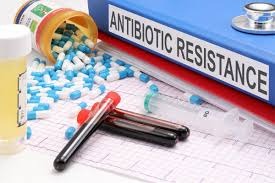Strategies for Combating Antimicrobial Resistance
Why the Way We Treat Infections Needs a Major Rethink
Antibiotics changed the way we handle infections. But that era is cracking. What used to be curable is starting to bounce back stronger—meaner. That’s the story behind antimicrobial resistance (AMR). It’s when the drugs we rely on stop working because the bacteria, fungi, and other microbes find ways to survive. They mutate, dodge, adapt—and suddenly, we’re the ones running out of moves.
Right now, it’s a global health crisis—quiet, slow, but growing louder.

The Problem We Created
The truth is, we helped this happen. Antibiotics were meant to be used with care, yet they’re often handed out too easily. Some doctors prescribe them to be safe. Others feel pressure from patients who expect something—anything. In farming, animals are loaded with antibiotics to grow faster and avoid sickness in packed spaces. It’s cheaper that way. But bacteria from those farms don’t stay put. They find a way out—through food, water, or contact.
Now, diseases that were once easy to treat are becoming stubborn. That simple ear infection? Could mean a hospital stay. A scratch on the leg? Riskier than it sounds.
First Move: Track the Problem Better
If we don’t know where resistance is building, we can’t fight it. Strong lab systems are the backbone here. They help detect resistant strains early, map how they spread, and guide doctors on what works and what doesn’t. It’s about gathering solid data, not guessing in the dark.
Second Move: Smarter Prescribing in Healthcare
Doctors need support—guidelines, testing tools, and time to explain to patients why an antibiotic isn’t always the answer. The right prescription at the right time, for the right duration, makes all the difference. Hospitals also need tighter infection control. Handwashing, clean tools, protective gear—it sounds basic, but it keeps infections from spreading room to room.
Third Move: Clean Up Agriculture
The overuse of antibiotics in animals feeds this crisis. Banning drugs used for fast growth is one step. Encouraging better farming conditions—cleaner spaces, less crowding, more vaccinations—reduces the need for constant medication. Some countries have started doing this. Others are lagging. The longer the wait, the harder it gets.
Fourth Move: Improve Sanitation and Hygiene
In places without clean water or proper waste systems, resistant infections thrive. Fixing this isn’t high-tech. It’s about basics: toilets, soap, clean water, waste removal. Hospitals especially need these. When patients with resistant infections aren’t isolated, others catch them. When hands aren’t washed, germs move fast.
Fifth Move: Fund New Treatments and Tools
We’re running out of antibiotics that work. And companies don’t rush to make new ones—they’re expensive, slow to develop, and not used often, which means profits are low. That’s where public funding helps. Backing new research, offering rewards, making sure scientists don’t walk away from the fight.
We also need fast, accurate tests so doctors can figure out what kind of infection they’re dealing with—and whether it’s resistant—before prescribing anything.
Sixth Move: Make Sure People Understand
Awareness isn’t a side note. It’s central. People should know when antibiotics help and when they don’t. They need to finish the full dose, never share meds, and avoid keeping leftovers “just in case.” Public campaigns—on TV, in schools, in clinics—can shape behavior. If patients stop expecting a prescription every time they cough, doctors can push back on misuse.
Seventh Move: Work Across Borders
This isn’t one country’s fight. A resistant strain in one part of the world can land somewhere else within hours. Countries need to work together. Share research. Share data. Agree on best practices. The World Health Organization is pushing this forward, but follow-through matters. Otherwise, we’re back where we started.
Eighth Move: Think Beyond Antibiotics
It’s time to explore other tools. Some researchers are testing viruses that kill bacteria (called phage therapy). Others are strengthening immune systems or trying to block the way bacteria attach to human cells. New approaches, new hope—but they’ll need support to become real-world options.
Final Thoughts
Antimicrobial resistance didn’t show up overnight. It built slowly, decision by decision. Fixing it will take just as much time, effort, and coordination. From policymakers to parents, everyone plays a role. We either act now or deal with the fallout later—when surgeries become too risky, and small infections become deadly.
Antibiotics should be lifesavers, not last resorts. Keeping them useful means doing things differently, starting now.




